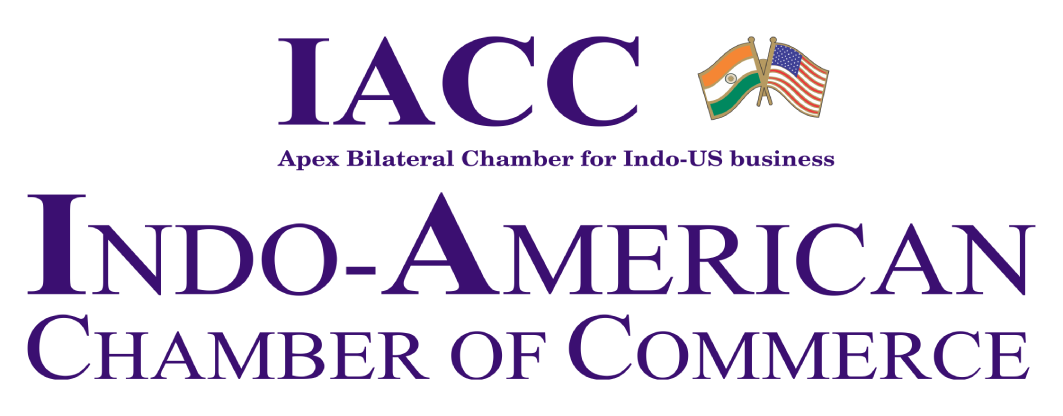Indo American Chamber of Commerce
About GoaWest India Council (WIC)
Goa is a state on the southwestern coast of India within the region known as the Konkan. It is surrounded by the Indian states of Maharashtra to the north and Karnataka to the east and south, with the Arabian Sea forming its western coast. It is India’s smallest state by area and the fourth smallest by population. Goa has the highest GDP per capita among all Indian states, two and a half times that of the country. It was ranked the best-placed state by the Eleventh Finance Commission for its infrastructure and ranked on top for the best quality of life in India by the National Commission on Population based on the 12 Indicators.
Panaji is the state’s capital, while Vasco da Gama is its largest city.
Goa’s state domestic product for 2017 is estimated at $11 billion at current prices. Goa is India’s richest state with the highest GDP per capita – two and a half times that of the country – with one of its fastest growth rates: 8.23% (yearly average 1990–2000).
Tourism is Goa’s primary industry: it gets 12% of foreign tourist arrivals in India. Goa has two main tourist seasons: winter and summer. In winter, tourists from abroad (mainly Europe) come, and summer (which, in Goa, is the rainy season) sees tourists from across India. Goa’s net state domestic product (NSDP) was around US$ 7.24 billion in 2015–16.
The land away from the coast is rich in minerals and ores, and mining forms the second largest industry. Iron, bauxite, manganese, clays, limestone, and silica are mined.
The Mormugao port handled 31.69 million tonnes of cargo last year, which was 39% of India’s total iron ore exports. Sesa Goa (now owned by Vedanta Resources) and Dempo are the lead miners.
During 2015–16, the total traffic handled by Mormugao port was recorded to be 20.78 million tonnes.
Goa’s Net State Domestic Product (NSDP) was Rs 706.83 billion (US$ 10.11 billion) in 2018-19. Goa’s economic growth is driven by the strong performance of its industrial sectors such as mining, tourism, and pharmaceuticals. As of March 2020, Goa had a total installed power generation capacity of 581.17 megawatt (MW).
Rice is the main agricultural crop, followed by areca, cashew, and coconut. Fishing employs about 40,000 people, though recent official figures indicate a decline of the importance of this sector and also a fall in catch, due perhaps, to traditional fishing giving way to large-scale mechanised trawling.
Medium scale industries include the manufacturing of pesticides, fertilisers, tyres, tubes, footwear, chemicals, pharmaceuticals, wheat products, steel rolling, fruits and fish canning, cashew nuts, textiles, brewery products.
Goa has a well-developed social, physical, and industrial infrastructure and virtual connectivity. It has an international airport that is in line with its importance as a globally-recognised leisure destination. It also has significant port infrastructure. The state has an established base for the pharmaceuticals industry and an emerging destination for knowledge-based industries such as biotechnology and IT. According to Department for Promotion of Industry and Internal Trade (DPIIT), Foreign Direct Investment (FDI) inflow in Goa stood at US$ 1,053 million during April 2000 and March 2020.
Recent Developments:
- A second greenfield international airport is being developed in Mopa, Goa with an annual capacity to handle 30 million passengers by phase IV. The first phase of the airport is expected to start by September 2020.
- A new export policy for the state is also being prepared to promote exports for manufactured goods and surplus agriculture produce.
- Merchandise exports from the state reached US$ 2.06 billion in FY19.
- As of February 2020, Goa had seven formally approved and three notified special economic zones (SEZs).
- Union Ministry of Home Affairs (MHA) has identified five islands in Goa, namely St George Island, Grande Island, Pequeno Island, Conco Island and Bhindo Island to carry out holistic development.
Key Sectors:
- Goa currently has a total of 38 operational mining leases with a reported production of 6.08 million tonnes in 2018-19. Export of iron ore from the state reached US$ 32.19 million in FY20 (till February 2020). Total iron ore traffic handled at Mormugoa Port; Goa was 1.71 million tonnes (MT) in FY20.
- The state is in the process of developing the logistics sector in Goa by forming a special logistics group and constructing several bridges to address the existing deficiencies regarding logistics and warehousing.
- Till December 2018, the state received 8.01 million tourists. 28 cruise ships with 38,543 passengers arrived in the state during this period.
- Goa has a coastline of about 104 kms and inland waterways of about 250 kms. The coast is full of creeks and estuaries formed by rivers. 72.09 thousand tonnes of marine fish were harvested in 2019. Export of marine products from Goa reached US$ 81.68 million during 2018-19 and US$ 44.27 million during April-December 2019.
Quick Links Message from the Branch Chairperson
Events Updates About Goa Events
Indo-American Chamber of Commerce (Registered office)
House No. Off-115, Kamat Tower,
Patto Plazo, Panjim, Goa,
North Goa, 403001
Contact Information
+91 22 35135664 /65 /66 /67
Mail us
goa@iaccindia.com
